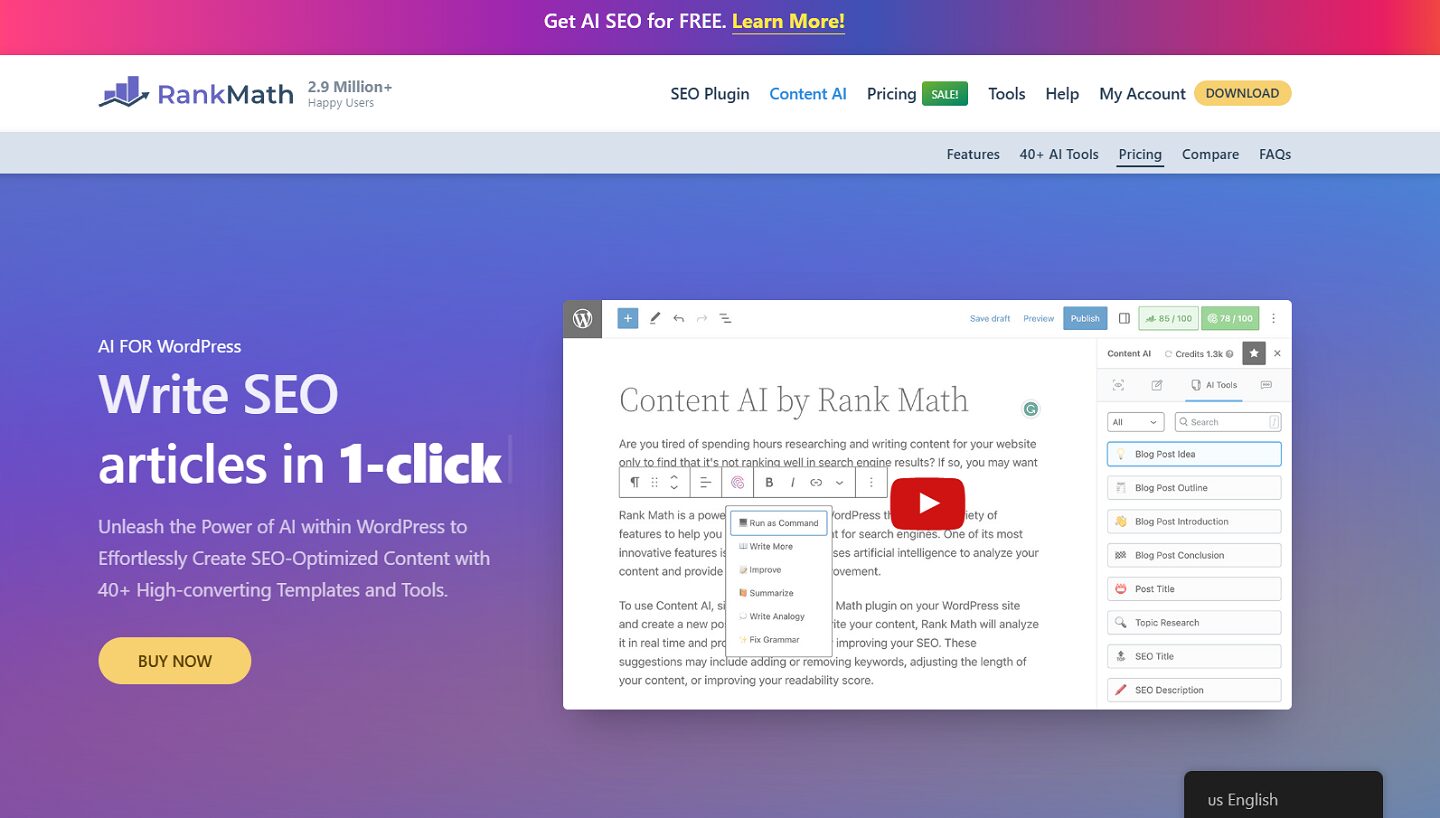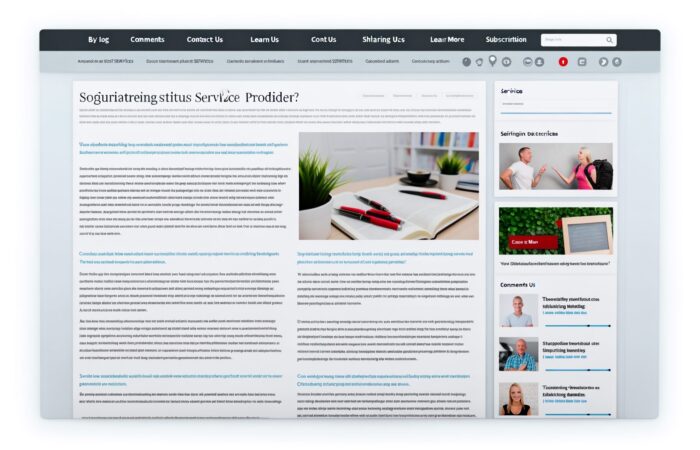Introduction to SEO and the Importance of Keywords
If you’ve dipped your toes into the digital marketing world, you’ve probably heard about SEO, or Search Engine Optimization. But what’s all the fuss about? Let’s break it down in a way that’s super easy to understand and why, oh why, everyone keeps fussing over keywords.
Think of SEO as the art of being the popular kid in the online school of search engines. You want your website to be the one everyone notices—and for good reasons! Now, imagine your website is a library book. To be found easily, this book (aka your website) needs to be properly indexed and placed where those who need it can easily find it. That’s essentially what SEO does. It helps your site show up higher in search results when someone looks for something you offer.
Now, enter keywords. These are the magic words that make this all possible. Keywords are what people type into search engines when they’re looking for information. They could be anything from ‘best coffee shops near me’ to ‘how to knit a scarf’. When your site uses the right keywords—the ones your ideal visitors are searching for—it becomes easier for search engines to match your site as a solution to their queries.
Why Keywords Matter
Let’s say you’re a baker specializing in gluten-free pastries. If someone nearby searches for ‘gluten-free pastries near me,’ and those words are sprinkled throughout your site, voila! Your site is more likely to pop up in their search results. Keywords help bridge the gap between user queries and your website’s content.
- Visibility: Using the right keywords helps increase your site’s visibility and traffic.
- Relevance: Keywords keep your content relevant and connected to your audience’s needs and search habits.
- Competition: Well-researched keywords can give you an edge in your niche market.
But here’s a little secret: While keywords are critical, they aren’t a solo act. They work best when backed by strong content and a good user experience. Think of keywords as the seeds you plant in your garden. Sure, they’re essential, but without sunlight, water, and good soil (aka quality content, site speed, mobile-friendliness), they won’t help your garden grow.
In conclusion, SEO and keywords aren’t just buzzwords. They’re fundamental elements that can lead to more eyes on your website and, consequently, conversions and sales. Stick around to dive deeper into how you can research and use keywords effectively to supercharge your site’s SEO strategy!
How to Research Effective Keywords
Let’s dive into the crux of crafting a winning SEO strategy: researching effective keywords. You’ve undoubtedly heard “keywords” thrown around a lot when it comes to SEO. But why the fuss? Simply put, keywords are your golden tickets to appearing in the right search results. They bridge the gap between what people are searching for and the content you’re offering. The trick, however, is finding the right ones.
Start with Brainstorming
Begin by jotting down terms related to your topic or industry. Think about the problems you solve or the questions your content answers. Don’t hold back; this is a brainstorming session! For a bakery, it might be terms like “gluten-free bread”, “custom cakes”, or “best pies”.
Look at the Competition
Next, check out your competitors. Which keywords are they targeting? Tools like Moz or SEMrush can give you a sneak peek at their strategies. This insight isn’t about copying but about understanding the market dynamics and identifying any gaps they might have left wide open for you.
Use Keyword Research Tools
Now, let’s talk tools! Free resources like Google’s Keyword Planner can help refine your list. Enter your brainstormed keywords, and it will show you search volumes, competition levels, and even suggest related terms. If you’re looking for more detailed analyses, paid tools like Ahrefs or KWFinder offer deeper insights into search trends and keyword difficulty.
Consider the Search Intent
It’s crucial to align your keywords with the searcher’s intent. Are they looking to buy something, or are they merely seeking information? For example, someone searching for “buy gluten-free cookies” is likely at a different stage in their buyer’s journey compared to someone looking for “what is gluten in food”.
Don’t Forget About Long-Tail Keywords
A common mistake is focusing solely on broad, highly competitive keywords. Instead, sprinkle in some long-tail keywords—longer, more specific phrases that have a lower search volume but often boast higher conversion rates. “Affordable custom wedding cakes Boston” might bring in less traffic than “wedding cakes,” but it’s targeted and likely to attract more relevant visitors.
Refine and Prioritize
With a robust list in hand, it’s time to prioritize. Focus on keywords that are highly relevant to your content, have a decent search volume, but aren’t so competitive that you’ll be fighting an uphill battle. This balance is key to driving the right traffic to your site without exhausting resources.
Keep the Process Dynamic
Finally, remember that keyword research isn’t a one-and-done deal. Search trends evolve, new competitors emerge, and Google’s algorithms change. Regularly revisiting and updating your keyword list will keep your content fresh and visible.
So, grab your digital pickaxe and start mining those keyword gems! With the right tools and a bit of savvy, you’ll craft content that not only ranks but resonates with your audience.
Tools and Technologies for Keyword Research
Alright, let’s dive into the exciting world of keyword research tools. Imagine these tools as your secret weapons to uncover the words and phrases your potential customers are typing into search engines. Picking the right tool not only simplifies your keyword hunt but also illuminates opportunities you might otherwise miss!
Starting with the Big Guns: Google Keyword Planner
Starting off, we have the ever-reliable Google Keyword Planner. Originally designed for Ad campaigns, this tool is invaluable for SEO too. It’s great for pulling the curtain back on the kinds of terms that are popular in your niche. Plus, it gives insights into monthly search volumes and competition levels. Here’s a kicker — it’s free if you have a Google Ads account!
The SEO Favorites: Ahrefs and SEMrush
Moving on to some heavy hitters in the SEO field: Ahrefs and SEMrush. Both tools are fantastic for a deeper dive into keyword research and competitive analysis. Ahrefs offers a super cool ‘Keyword Explorer’ that not only shows search volume but also how hard it would be to rank for a keyword. SEMrush, on the other hand, provides detailed keyword data, and also allows you to peek at the keywords your competitors are using successfully.
For the Trendsetters: Google Trends
If you’re looking to tap into the latest buzz or find seasonal trends, Google Trends is your go-to. It’s perfect for understanding the broader context of keyword popularity over time. This can be particularly handy if you’re into content that’s tied to specific events or seasons.
User-Friendly and Effective: Ubersuggest
Ubersuggest, developed by digital marketing expert Neil Patel, is both user-friendly and effective for those new to SEO. The tool offers keyword suggestions, competition insights, and even content ideas. It’s like having a conversation with an SEO guru who gives you tailored advice!
Don’t Forget The People Also Ask Box
A simpler, often overlooked technique is to use Google’s “People Also Ask” box. Just type in a key term and see related queries that people are searching for. This is a goldmine for addressing specific questions your audience might have, and it can greatly inform both your keyword strategy and content development.
Supplementing with AnswerThePublic
Last but not least, there’s AnswerThePublic. This tool visualizes search questions and associated keywords in a fascinating way that resembles a spider’s web. If you are looking to create content that answers direct questions from potential visitors, this is a fantastic tool for that.
So, with all these awesome tools at your disposal, you can really start to shape a winning keyword strategy that’s guided by detailed insights and real-time data. Remember, the more you understand the tools and their unique benefits, the more effectively you can use them to your advantage. Dive in, experiment, and watch your SEO efforts bear fruit!
Understanding Search Intent and Keyword Relevance
So, you’ve gathered up your keywords, but now comes the crucial part—understanding the search intent behind them. Why? Because if you know what prompted someone to type those words into Google, you’re much better placed to answer their questions or solve their problems. And when you do that effectively, Google notices and your content climbs the rankings ladder.
Search intent basically refers to the why behind a search query. What is the searcher hoping to find? Are they looking to buy something, or are they just looking for information? Perhaps they want a quick answer to a question, or maybe they need a detailed tutorial or guide. Recognizing this intent is your golden key to crafting content that resonates.
Types of Search Intent
Typically, search intent falls into a few clearly defined categories:
- Informational: Here, the user is likely on a quest for knowledge. Queries such as ‘how to bake a cake’ or ‘what is SEO’ fit this bill.
- Navigational: The searcher is looking for a specific website or page. Think ‘Facebook login’ or ‘Amazon customer service’.
- Commercial: The user is considering a purchase and wants to compare options or learn more about product categories. Keywords like ‘best gaming laptops 2023’ demonstrate this intent.
- Transactional: This is where the rubber hits the road — the searcher is ready to buy. Keywords like ‘buy MacBook Pro’ or ‘discount codes for sneakers’ are clear indicators.
Understand that these aren’t just categories; they’re opportunities. Each type of intent requires a different approach in your content. A person looking for information does not want to be bombarded with sales pitches; they need clear, factual content that educates. Conversely, someone in the transactional phase is likely beyond needing persuasion on the basics—what they need is a trustworthy, easy path to purchase.
Matching Content with Intent
Now that we’ve lined up our intents and keywords, let’s talk about making them work together. If ‘how to tie a tie’ is your keyword, an in-depth article or a step-by-step video tutorial could serve an informational search intent very well. On the other hand, for a keyword like ‘buy silk ties online’, your best bet would be a product category page with high-quality images of ties, detailed descriptions, and easy navigation to the checkout screen.
But remember, Google’s smarter than it’s ever been. It’s not enough to match keywords to content types superficially. The content needs to deliver value and fulfill the searcher’s intent compellingly and thoroughly. Google uses various signals to assess how well a piece of content matches the intent of a search query, and better matches mean better rankings.
Incorporating this understanding of search intent into your keyword strategy isn’t just a nice-to-have—it’s essential. It ensures that your content does more than just attract eyes; it engages them, answers their questions, and solves their problems. That’s how relationships with readers—and customers—are built.
So, take a moment to consider not just the what of your keywords but the why. It’ll refine your strategy and elevate your SEO game to a whole new level. And honestly, who doesn’t want to be at the top of their SEO game?
Structuring Your Content for SEO Success
Now that you’re armed with a set of well-researched keywords, it’s time to dive into one of the most thrilling parts of crafting SEO-friendly content: structuring your masterpiece! The way you organize your content can significantly impact how both users and search engines perceive its value.
Start with a Strong, Clear Outline
Before you even start typing up your first draft, sketch out an outline. This acts a bit like a road map, guiding you through the various sections of your content. It ensures every keyword has its place and that your ideas flow logically from one to the next — crucial for keeping those readers engaged and onboard.
Make Use of Headings and Subheadings
Think of headings and subheadings as SEO gold. They break up your content into digestible chunks and help search engines understand the main topics of your page. Here’s a little trick: Incorporate relevant keywords into these headings for an extra SEO boost. Just remember to keep them natural and helpful; no keyword stuffing!
Paragraphs – Short and Sweet
We’ve all been there, staring at a large block of text, feeling the dread rise. Don’t let your content be that block of text! Keep your paragraphs short — around 2-3 sentences each. This makes your content easier to read and absorb, especially on mobile devices where big chunks of text can be daunting.
Bullet Points and Numbered Lists
Who doesn’t love a good list? They’re not just easy on the eyes but also an effective way to structure your content for clarity and impact. Use bullet points or numbered lists to highlight important data or steps in a process, all while keeping your content tidy and engaging.
Visual Appeal with Images and Videos
Enhance your written text with relevant images and videos. Not only do they provide a break in the text, but they also offer additional ranking opportunities through image search and can improve user engagement. Remember, every image needs an ALT text, which helps search engines understand what the image is about — and yes, you can sprinkle your keywords there too!
Internal and External Links
Linking is like the cherry on the cake! Internal links to other pages of your website help spread link equity and keep users engaged longer. External links to reputable sites, on the other hand, boost your credibility and can aid in providing in-depth information that complements your content.
By structuring your content effectively, not only do you make it reader-friendly, but you also sculpt it into an SEO magnet. Each piece of content is a building block in the vast structure of your site. Done right, it leads to a sturdy, impressive presence in the digital world that both users and search engines will love. So, are you ready to structure your next content piece like an SEO pro?
On-Page SEO Techniques to Improve Content Visibility
Alright, now that you’ve mastered structuring your content for SEO, let’s dive into the nuts and bolts of on-page SEO techniques. Think of on-page SEO as the seasoning that makes your content not just palatable but downright irresistible to search engines. 🚀
Optimizing Your Titles and Headings
First off, your title is the big neon sign that either pulls people in or sends them scrolling past. It must be catchy yet relevant. Include your primary keyword naturally, and keep it under 60 characters to ensure it displays fully in search results. For headings, use them strategically to organize content. They help Google understand the hierarchy and flow of your article. Plus, they break up text, making it easier for your audience to digest.
Meta Descriptions That Sell
Think of your meta description as a mini-ad for your content. This little snippet appears under your title in search results and has the power to influence whether someone clicks on your link or not. Keep it snappy and relevant, between 150-160 characters, and sprinkle in your primary keywords. More importantly, make it compelling!
Optimize Those URLs
Bet you didn’t think URLs matter much, right? But here’s the scoop: A clean, descriptive URL not only gives a clear idea of what your page is about but also boosts your SEO. Include keywords and avoid numbers or gibberish. For instance, use /on-page-seo-techniques instead of /page-1234. It’s more informative and much friendlier for both users and search engines.
Let’s Talk About Keyword Density
Gone are the days when stuffing your content with keywords could get you to the top of search results. Now, it’s all about balance. Aim for a natural flow using relevant keywords where they make sense, typically aiming for a 1-2% keyword density. This means if your article is 500 words, your keyword should appear around 5-10 times. But, always prioritize readability over keyword stuffing!
Inviting Images
A picture says a thousand words, right? Images not only make your content more visually appealing but they also have SEO benefits. Use high-quality images relevant to your content and make sure to optimize the file names and alt text with relevant keywords. This assists image search engines in understanding and indexing your content better.
Internal Linking: A Goldmine
Internal links are your chance to guide visitors through your website, keeping them engaged longer. Plus, these links help search engines crawl your site more effectively. Link to your own relevant articles or pages to build a strong interlinking structure. This lets search engines know which pages are important and how they relate to each other.
Employing these on-page SEO techniques can significantly enhance your content’s visibility and searchability. Remember, the ultimate goal is to create a user-friendly experience that search engines recognize and reward. Now, go get ’em, SEO warriors!
Monitoring and Adjusting Your SEO Strategy
So, you’ve launched your SEO-optimized website, sprinkled the right keywords, and structured your content effectively. What’s next? Well, in the exciting world of SEO, the endgame is never really an end. It’s an ongoing process of monitoring, evaluating, and tweaking. Let me guide you on how to stay on top of this ever-evolving beast!
The Value of Regular Check-ups
Imagine SEO as a garden that you’ve just planted. You wouldn’t just water it once and expect it to thrive forever, right? Similarly, your website needs regular attention and care. Regular monitoring helps you understand what’s working and what’s not. More importantly, it lets you catch any issues before they turn into bigger problems. Think of it as your own SEO health-check.
Key Metrics to Watch
Let’s get down to the nitty-gritty. Here are some vital signs you should keep an eye on:
- Rankings: Track where your pages appear in search results for your targeted keywords.
- Traffic: Observe the number of visitors coming to your site, especially from organic search.
- Bounce Rate: Watch how quickly people are leaving your site. A high bounce rate might suggest that your content isn’t matching the user’s search intent.
- Conversion Rates: It’s not just about getting visitors; it’s about turning them into customers or followers.
Tools of the Trade
Luckily, you don’t have to do all the monitoring manually. There are fantastic tools out there that can help streamline this process. Google Analytics is a fan favorite for tracking website traffic and user behavior. Google Search Console lets you peek behind the curtain to see how Google views your site, tracking rankings and indexing status. Combine these with more specialized tools like SEMrush or Ahrefs for a deeper dive into competitive analysis and keyword tracking.
Adapt and Overcome
Gathered all that data? Great! Now comes the fun part. Using your findings to tweak and tune your website. Noticed a drop in traffic from a particular keyword? Maybe it’s time to refresh that content or adjust your keyword strategy. The digital landscape shifts rapidly, and flexibility is key. Maybe a new competitor has emerged, or Google has changed its algorithm. Stay alert and be ready to pivot.
Consistency is Key
The most important piece of advice? Be consistent. SEO isn’t a one-off task but a continuous cycle of improvement. Set a schedule for reviewing your SEO performance metrics, whether it’s weekly, monthly, or quarterly. This regularity ensures you’re always one step ahead, making adjustments proactively rather than reactively.
Remember, the end goal of SEO is to ensure that your site is as visible and valuable to your audience as possible. By staying vigilant and responsive to the data, you’re not just chasing keywords or rankings; you’re creating a more engaging, dynamic, and useful experience for your users. And that’s really what great SEO is all about!











No Comment! Be the first one.